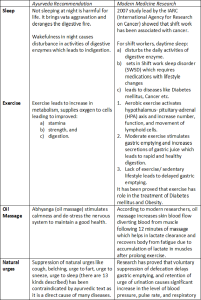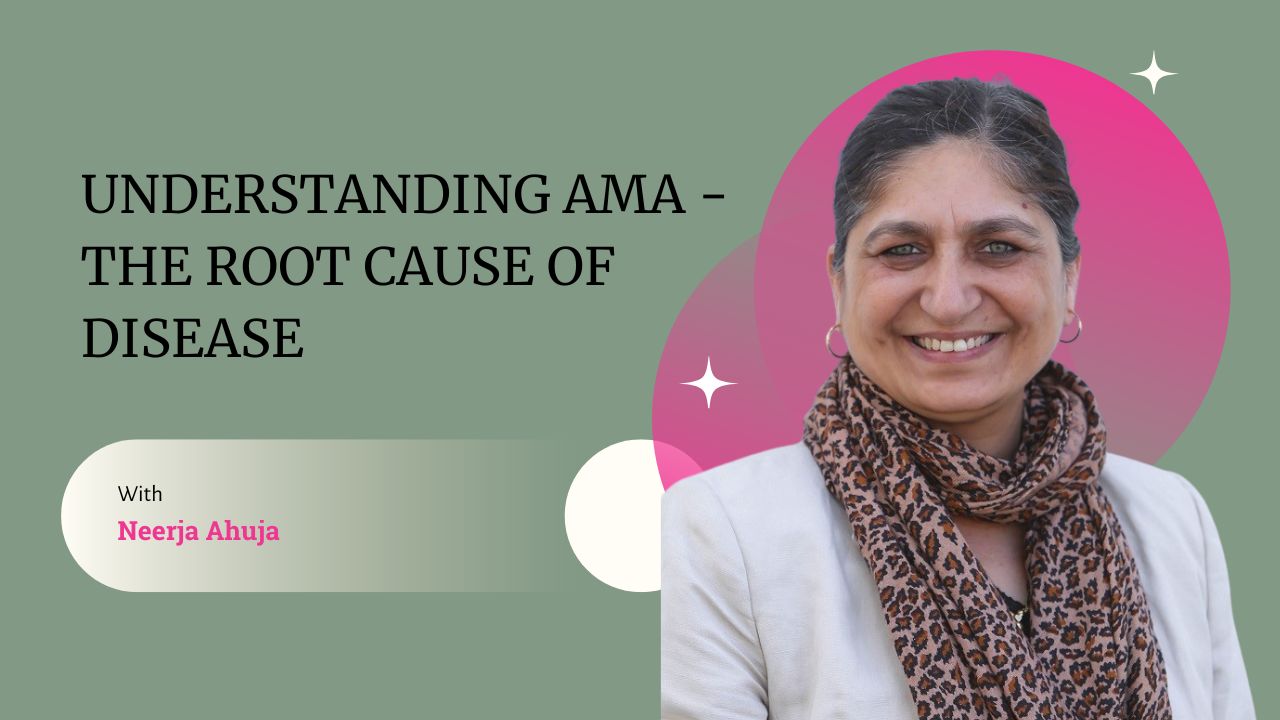Trends of Chronic and Non-Communicable Diseases (NCD)
From the last few decades, there has been a global concern on raising trends of chronic and non-communicable disease (NCD), an epidemic of lifestyle related diseases like diabetes, obesity, heart diseases, typically a result of stress, improper diet and irregular or sedentary lifestyle.
These NCDs are lifestyle disorders that can be prevented by lifestyle modification. The healthcare burden in developing countries is mainly from non-communicable diseases, and the prevention of such disease is the solution for it.
Some numbers for NCDs and Chronic conditions
According to the health statistics of WHO, among 57 million global deaths in 2008, 63% were due to non- communicable diseases (NCD) like cardiovascular, cancers, respiratory diseases, etc.
Chronic conditions are a substantial global, national, and individual health issue, contributing to both premature mortality and morbidity. Globally, they are leading causes of disease burden, responsible for around 70% of deaths worldwide (WHO 2017a).
Non- communicable diseases (NCD) are prone to kill more people than communicable diseases worldwide. For NCD and chronic health issues, lifestyle disorder is a major factor.
Economic effects of noncommunicable diseases (NCD)
The economic consequences of NCD are huge, because of the combined burden of health care costs and lost economic productivity due to illness and premature deaths.
A study commissioned by the World Economic Forum concluded that the world would sustain a cumulative output loss of
- $47 trillion between 2011 and 2030 because of noncommunicable diseases and mental illness,
- About $30 trillion of which will be attributable to cardiovascular diseases, cancers, chronic pulmonary diseases, and diabetes. NCDs are also a major cause of huge health expenditure among the uninsured people.

Fig 1: Burdon of Communicable and NCD a) Globally and in b) Australia
NCD Risk factors
Factors that contribute to the development of NCDs, typically include:
- Tobacco use,
- Excessive alcohol consumption,
- Poor diet, and
- Lack of physical activity
Measurable risk factors for the incidence of NCDs, include:
- High blood pressure,
- Hypercholesterolemia, and
- Obesity.
Prevention of Chronic and NCD disorders by lifestyle modification
From western medicine perspective, plenty of research have been initiated for the establishing the of role of lifestyle modification in the management of NCD disorders, but very little has been done to establish role of lifestyle intervention in the prevention of such diseases.
A growing body of scientific evidence has shown that lifestyle intervention is an essential element in treatment of chronic disease that can be as effective as medication, but without risks and undesirable side effects. Lifestyle interventions may include diet, exercise, stress management, and de-addiction, for both treatment and management of diseases.
Modern medicine is starting to appreciate the role of dietary factors in the pathogenesis, progress, and outcome of disease.
Role of Ayurveda as Preventative Health System for Chronic and NCD disorders
World Health Organization (WHO) considers Ayurveda as the oldest and holistic health care.
The factors contributing to lifestyle diseases typically include :
- Irregular food habits,
- Sedentary work, and
- Stress
Ayurvedic lifestyle supports physical, mental as well as social health. These lead to improvement in disease process, disease symptoms and improvement in the quality of life, helping in the prevention and management of diseases.
Healthy living style mentioned in is in the form of daily, and seasonal routines, good food habits and appropriate physical exercise.
Disease Process according to Ayurveda
According to Ayurveda, before any disease manifests, warning signs of upcoming diseases can be traced by the occurrence of few of the premonitory sign or symptoms of that particular disease.
For example, patients moving towards disorders of deranged fat metabolism (Meda Dhatu vikruti) may present with the symptoms of lethargy, heaviness in the body, indigestion and unsatisfactory bowel habits. If these people are screened for blood tests for lipid profile or plasma glucose level, the reports may indicate abnormal lipid profile or prediabetic state.
For example, the flare-up of episodes of allergic conditions such as allergic asthma, allergic rhinitis, urticarial rashes, and eczema is strongly associated with inappropriate diet and lifestyle such as incompatible diet along with sedentary lifestyle.
For such individuals, implementing of modified lifestyle can help to bring down the severity of conditions. Regular detox and rejuvenation (Panchakarma) procedures along with immune modulatory medicines (Rasayana) may prevent recurrences of the symptoms.
Working on the prevention level may stop or slow down the progression of the disease and avoid the complications. Ayurveda has great contribution in treatment of diseases as well as prevention of diseases.
Focus of Ayurveda in attaining and maintaining health and wellbeing:
To promote good physical, mental, and social quality of life, Ayurveda focuses on
- Prevention of disease from root cause; the root cause includes inappropriate food and lifestyle habits that have a direct impact on your health, this happens due to “mistake of the intellect” (pragya aparadha).
- Managing any disease by avoiding its cause as the first line of defence. With internal and external medication or treatments being of secondary significance.
- Maintaining a healthy lifestyle, through the following four Pillars of Ayurveda:
- AHARA (life supporting diet), emphasises need for a healthy, nourishing diet.
- VIHARA (life supporting activities), appropriate recreational activities to relax body and mind, this includes relaxation, maintaining stillness of action-speech-thoughts, (e.g. meditation) and group activities (e.g. sports) where one can lose the sense of individuality and get present to community.
- ACHARA (lifestyle), the importance of healthy daily routines and activities such as exercise and recommends yoga asana and pranayama on a regular basis, as they support cardio-respiratory health, other than physical and mental strength.
- VICHARA (thought processes), the right thoughts and right attitude towards life is essential for wellbeing, a balanced state of mind is achieved by following the human values, moral restraints, and ethical observances (yama-niyama of yoga for sattwic state of mind).
Ahara
Modern medicine is starting to appreciate the role of dietary factors in the pathogenesis, progress, and outcome of disease. Nutritional, biochemical, and metabolic aspects of diet play an important role in maintaining health.
Ahara means life supporting diet. Ayurveda gives importance to not just what you eat, but also how you eat and when you eat. Every bite you put in your mouth counts for your wellbeing.
According to Ayurveda, our food is categorized into three kinds:
- Sattwic
Sattwic diet brings peace and equanimity in the mind and sense of wellness, and is prepared and served with love and affection.
Sattwic food is simple food and chosen to give nourishment at the mind-body level, giving energy to the body and keeps the mind stable. This food type typically includes milk (organic, bio dynamic in today’s time) and milk products, fresh fruits, dry fruits, seasonal vegetables cooked and eaten fresh, unrefined cereals, pulses, spices like ginger, pepper, turmeric, cumin, honey, jaggery, ghee, and vegetable oil.
- Rajasic
Rajasic food creates an agitated and restless state of mind. These foods include meats, especially red meats, garlic, onion, unseasonal vegetables, hot and sour foods.
- Tamasic
Tamasic food creates a lethargic state of mind. This includes food, which is old, left over or cooked over a long period. All refined, processed, artificial flavoured foods, deep-frozen foods, deep-fried foods, liquor, tobacco, drugs are typically included here.
In Ahara, Ayurveda has described the properties of different foods, starting from daily food such as grains, pulses, and cereals to various other foods such as milk, buttermilk, ghee, water and so on. It gives definite rules about Do’s and Don’ts of eating, for healthy eating.
Ayurveda not only addresses what food is best for an individual, but also how food is best eaten and how it is best combined. Appropriate food choices, taken in the best possible way, will help prevent most digestive problems. This will also help in preventing more serious diseases in the deeper tissues and organs of the body.
A good balanced diet and its appropriate modifications recommended by an Ayurveda Practitioner, can support in many ways as:
- Prevent disease by restricting the pathogenesis of many diseases.
- Interfere in the disease process, helping in resolving it early.
- Adjunct to reverse the adverse effects of common medicines, and may work synergistically with medicines to cure the disease.
- Preventing many serious systemic diseases caused by poor lifestyle.
- Preventing aggravations and relapses of the disease.
- Preventing co-morbidities.
Vihara
Vihara means recreation. Stress is a common factor in many diseases. Everybody is stressed but the reasons for stress can vary. Recreation, relaxation and enjoying family time rejuvenates the body and mind. It is a kind of anti-depressant.
In Vihara Ayurveda speaks about certain things that are to be undertaken and some of the things which are to be avoided. E.g., Ayurveda always mentioned that ‘Vyayama’ i.e. exercise, is to be carried out daily, but appropriate to one’s mind body type (prakruti), age and strength. Very heavy, disproportionate workouts/exercises may be harmful to the individual.
Vihara also gives hints and do’s and don’ts regarding sleeping patterns, behaviour, habits, and routines. Spending some time in activities which you enjoy clears the mind, relieves depression and anxiety, elevates mood, and gives a feeling of wellbeing.
Active creative hobbies like gardening, painting, playing musical instruments engage all sensory organs and release stored emotions and recharge the mind. Playing sports is another way of relaxing body and mind.
Relaxation is an extremely important aspect of a well-balanced personality. It is important for our body, emotions, and our nervous system. Regular exercise and relaxation keep you fit and help in prevention of disease.
Vihara includes pattern of social relations, appropriate use of five senses, entertainment, and dressing sense. A lifestyle is a characteristic bundle of behaviours that makes sense to both others and self, in a given time and place, including social relations, “food” from our five senses, entertainment and dress.
For example, according to Ayurveda, diabetes mellitus (Prameha) is caused by inappropriate diet and lifestyle (mithya ahara vihara) such as sedentary lifestyle, excessive sleep, laziness, excessive intake of yoghurt, excessive milk products, intake of food substances which are cold, unctuous, sweet, fatty and liquid, and all other kapha promoting substances.
Mostly sedentary life, wrong kind of foods, incompatible diet, excessive intake of food leads to diabetes mellitus (Prameha). So, any person who wants to prevent diabetes mellitus, must practice healthy way of living by following daily routines (dinacharya), seasonal routines (rutucharya), by consumption of healthy food (hita ahara) whose intake leads to maintenance of the three doshas in balanced state so that a person can avoid any kind of disease.
As per Ayurveda, preventing a disease before its onset is done by following healthy food and lifestyle (hita ahara and vihara).
Modern Research finding on the contemporary Ayurvedic lifestyle recommendation
For a healthy body and mind, we need to discourage the harmful lifestyle and encourage lifestyle that supports life.
Achara
Achara stresses on the mode of lifestyle which needs correction so that any existing disease will not reappear later and if there is no disease, lifestyle works at preventative level. Ayurveda stresses the importance of healthy activities such as exercise and recommend asanas according to individual mind-body type, and pranayama.
How often is it that your day goes not according to your plans and you get hassled with too much work in the day? Our mental health and being are dependent on better routines (achara). Regularity and sincerity are two major components of a good routine. One of the best examples of following a routine is the SUN. It rises and sets daily according to its plan, without any excuse. We live according to its rhythms. Imagine if there was no routine of sun rise!
It works to plan your day in advance. Incorporate all necessary task for self, work, food, recreation, and sleep. The solutions to many of our difficulties in life lie in setting out right habits and right routines.
Vichara
Mind has been described and said to be as restless as a ‘drunken monkey bitten by a scorpion’. In Vichara, Ayurveda stresses upon the “right thoughts” for de-stressing of the mind, modes of relaxation and how to solve the solvable problems and how to live harmoniously with the non-solvable issues.
Our mental health is dependent on how we think. Our thoughts are food for our mind. Buddha says, “Based on your thinking you become the person you are”. If you think you are weak, you will be weak. If you think you are strong, you will be strong. Managing your thought process is crucial for wellness.
Good thought processes can be added in daily life by things like, reading good books, reading scriptures, being in company of good people, books, podcasts, blogs, reciting certain mantras, recollecting good experiences, and thinking positive in all situations.
Right thoughts and right attitude towards life is vital for wellbeing. A balanced state of mind is obtained by following the human values, moral restraints, and ethical observances (yama-niyama of yoga).
Some quotes
Vichara is about uncluttering your mind. It is about living with a peaceful mind. It is about experiencing your human potential that becomes possible at a whole new level when you clear your mental tensions!
Do you know your busy mind creates more physical tensions in your body than with what you do physically?
“As the mind, so the man.”
“Your body opens up more when your mind opens up!”
“Nothing tightens the spine like the tangled mind!”
Vichara is also a process of exploring inward, to uncover the tight spots in your mind and emotions, and to untangle them compassionately and effectively.
Vichara can help steady your emotions and your mind.
As you dissolve your old and negative thinking patterns and mental and emotional blocks, you will experience clarity in your mind to access the inner answers, opening your mind to new possibilities.
Some practical Ayurvedic daily lifestyle routines recommendation for good health:
- Avoid Suppression of natural urges and forcibly creating artificial urges when body does not want to eliminate something. (eg in bulimia)
- Eliminate the body’s waste products in morning to avoid illness.
- Exercise early in the morning and an oil massage regularly delays aging.
- Wash your face & eyes with water.
- Do “Detox” according to season e.g. in winter, put oil in your nostrils to clear sinuses.
- Try to wake up between the hours of 4 a.m. and 6 a.m., have an early and light dinner between 6 p.m. and 8 p.m. and go to sleep early by 10 p.m.
- Take therapeutic nutrition (diet based on Ahara principles of Ayurveda) and Rasayana (Rejuvenative substances)
- Work at mind, and body level through psychological, occupational, & medicine components (Aushadha).
- Eat breakfast as per Ahara recommendations for your body type.
- Try to get gainful employment that works for your mind-body type (prakruti).
Ayurvedic focus on prevention to restore client’s optimal health:
An Ayurvedic therapist is focused on raising the awareness of the patient for better health through Vihara and is concerned about social healthy relationships, work, and spiritual growth in addition to the current disease. This can be done through:
- Stress management (through enhancing Sattwa)
- Restful sleep
- A daily balancing routine (Proper Dinacharya)
- Mind – body integration (enhancing Sattwa)
- Herbal supplementation
Ayurveda, the “Science of Life”, promotes a lifestyle that is in harmony with nature. It is used to treat a variety of illnesses including depression, digestive, and chronic disorders. Below are some examples of how to follow an Ayurvedic lifestyle. Specific programs are usually set for individuals as well, in addition to these:
Some practical examples of managing Vichara
We create our own life and that is why we train or not train our mind continuously. A negative mind can create any disease. A negative mind cannot be trained; it must be quietened first.
So, we need to stop thinking and increase our energy levels. One way of doing it is putting our mind on something positive and steady it, rather than allowing it to waver. If our mind is disturbed and wavering, we can put our focus on some work or activity that we enjoy, for example
- We can work with hands in garden;
- Do Asanas or focus on the breath;
- Take a few deep breaths;
- Eat something fresh;
- Play with a child.
Watch our thoughts and the most important is to think right, even if people around us are triggering something negative in us. How can we work on right thoughts? Whenever one feels that mind is going towards negativity, one can opt to join the company of like-minded people, if possible, and focus on:
- Discussing good thoughts,
- Read good literature,
- Watch your breath,
- Memorise a poem,
- Sing a song, and
- Write
All the above help the mind to go in a new direction. It becomes one pointed. Stopping the mind from wavering is not easy. But making it one pointed is easier.
Lifestyle management plays a significant role in maintaining health, recovering from illness or surgery. Ayurveda gives us daily and seasonal routine to be followed to not only preserve and maintain health and achieve long life but also to be creative and productive, fulfilling our own potential.
If we want to be healthy then we need to take care of these “4 Pillars of Health.” When one is established in these four areas of Ahara, Vihara, Achara & Vichara, then good physical, mental, emotional, and spiritual health is possible.
In summary, we can use the ancient “Science of Life”, Ayurveda, to enhance wellness, fulfil our own potential as human being, and reduce the economic burden of noncommunicable disease and chronic illnesses management, as well as work on preventative health. Ayurveda is not just the science of past, but also of the future, in helping to live longer and healthier, adding years to life and life to our years.




